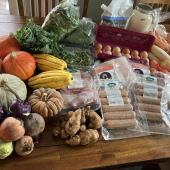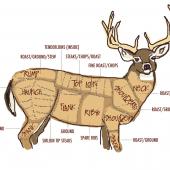Burn It Off
Shedding winter weight.
The sun slowly returns from the south, much like the migrating birds. Plants prepare to emerge from the earth and animals become more active. Spring is a time of transition as nature re-emerges from the scarcity of winter to the abundance of summer. It’s time to shed those extra pounds that sustained us through snow and cold.
It’s natural to put on a few pounds in autumn to help keep us warm and carry us through the winter. It’s common to gain a few more pounds during the holidays. Prior to agribusiness, preservatives, and trans-global food shipping, this extra weight would be naturally shed by the shortage of food between the end of winter and the full emergence of spring. Today, with no depletion in food stores, we have to work to lose that weight.
It’s basic physiology: if we eat more calories than we burn in a day, we store it as fat for an energy emergency. Mammals naturally move less in winter to conserve energy. Spring is time to be more active and burn more calories. Intensity, duration, and frequency are all important factors, but it’s important to ease into spring training to help prevent injury.
Eat more nutrient-dense food to help reduce caloric intake without depriving the body of the materials it needs to operate—vegetables, nuts, seeds, and lean meats and fish. Eat minimal grains and starchy veggies like potatoes. Remember, we feed grains to animals to fatten them.
Avoid extreme low-calorie diets. They can be counterproductive because they deprive our bodies of necessary nutrients and cause hormonal changes that slow our metabolism, making it harder to lose weight. Eating smaller meals with frequent nutrient-dense snacks, like carrots or celery with hummus, is a better strategy.
Breakfast should be the biggest meal of the day. Skip the cereal and have protein. It will help sustain your energy through the day and reduce cravings and overeating at night. Getting a good night’s sleep can also curb junk-food cravings.
Chewing our food well, roughly 31 times per bite, and putting the fork down between bites helps us eat less. It gives our brain time to get the signal we have had enough—healthy fats like butter from grass-fed cows, avocados, coconut, and raw walnut oil also help create a sense of satiety so we eat less.
Lou Walters is a naturopathic physician at The Source Wellness Center. For more information visit TheSourceWellnessCenter.com.













